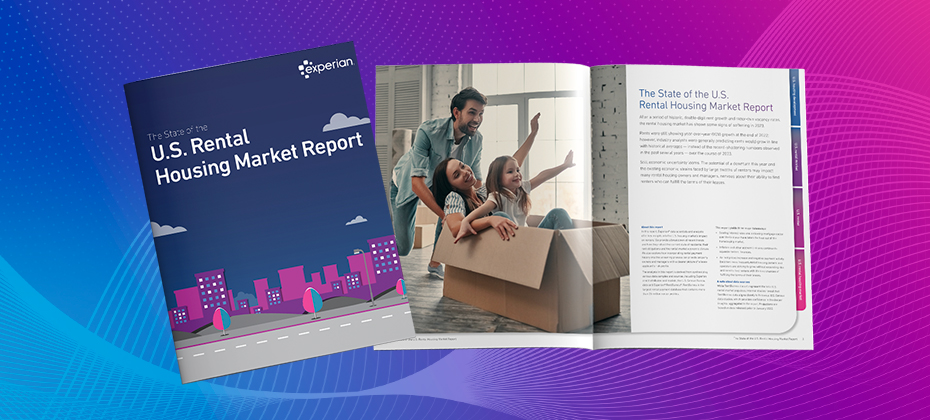Latest Posts

This article was updated on August 9, 2023. Debt collections can be frustrating — for both consumers and lenders alike. Coupled with ever-changing market conditions and evolving consumer expectations for their digital experience, lending institutions and collections agencies must develop the right collections strategies to reduce costs and maximize recovery rates. How can they do this? By following the three Cs — communication, choice and control. Communication To increase response rates and successfully retrieve payments, lenders must cater to consumers’ preferences for communication, or more specifically, make the right type of contact at the right time. With debt collection predictive analytics, you can gain a more holistic view of consumers and further insight into their behavioral and contact channel preferences. This way, you can better assess an individual's propensity to pay, determine the best way and time to reach them and develop more personalized treatment strategies. Control Debt collection solutions that provide a more comprehensive customer view can also give individuals greater control as they’re able to engage with collectors via a channel that may be easier or more comfortable for them than a phone call, such as email, text or chatbots. Providing consumers with various options is especially important as 81% think more highly of brands who offer multiple digital touchpoints. To further improve your methods of communication, consider streamlining monotonous processes with collection optimization. By automating repetitive tasks and outreach, you can reduce errors and free up your agents’ time to focus on accounts that need more attention, creating a customer-centric collections experience. Choice Ultimately, the success of collections initiatives relies heavily on how well collection practices are accepted and adopted by the end user. Consumers want to make informed decisions and want to be offered choices – therefore giving them more control in a decision-making process and with their finances. “Consumers have made a monumental shift to digital. To enhance your collections performance, it is critical to engage consumers in the method and channel of their choosing,” said Paul Desaulniers, Head of Scoring, Alternative Data and Collections at Experian. Lending institutions and third-party collection agencies that are able to communicate across all consumer channels will see more success in their collections strategies. Are your debt collection tactics and strategies up-to-par? READ: Strengthening Your Debt Collection Strategy Improve your collections strategy By catering to consumers’ communication preferences, giving them control and offering them choices, financial institutions and collections agencies can more effectively reach their customer base, with less effort. It’s a win-win for all. Experian offers various debt management and collections systems that can help you optimize processes, reduce costs and increase recovery rates. To get started, visit us today. Learn more

Using data to understand risk and make lending decisions has long been a forte of leading financial institutions. Now, with artificial intelligence (AI) taking the world by storm, lenders are finding innovative ways to improve their analytical capabilities. How AI analytics differs from traditional analytics Data analytics is analyzing data to find patterns, relationships and other insights. There are four main types of data analytics: descriptive, diagnostic, predictive and prescriptive. In short, understanding the past and why something happened, predicting future outcomes and offering suggestions based on likely outcomes. Traditionally, data analysts and scientists build models and help create decisioning strategies to align with business needs. They may form a hypothesis, find and organize relevant data and then run analytics models to test their hypothesis. However, time and resource constraints can limit the traditional analytics approach. As a result, there might be a focus on answering a few specific questions: Will this customer pay their bills on time? How did [X] perform last quarter? What are the chances of [Y] happening next year? AI analytics isn't completely different — think of it as a complementary improvement rather than a replacement. It relies on advances in computing power, analytics techniques and different types of training to create models more efficient than traditional analytics. By leveraging AI, companies can automate much of the data gathering, cleaning and analysis, saving them time and money. The AI models can also answer more complex questions and work at a scale that traditional analytics can't keep up with. Advances in AI are additionally offering new ways to use and interact with data. Organizations are already experimenting with using natural language processing and generative AI models. These can help even the most non-technical employees and customers to interact with vast amounts of data using intuitive and conversational interfaces. Benefits of AI analytics The primary benefits of AI-driven analytics solutions are speed, scale and the ability to identify more complex relationships in data. Speed: Where traditional analytics might involve downloading and analyzing spreadsheets to answer a single question, AI analytics automates these processes – and many others.Scale: AI analytics can ingest large amounts of data from multiple data sources to find analytical insights that traditional approaches may miss. When combined with automation and faster processing times, organizations can scale AI analytics more efficiently than traditional analytics.Complexity: AI analytics can answer ambiguous questions. For example, a marketing team may use traditional analytics to segment customers by known characteristics, such as age or location. But they can use AI analytics to find segments based on undefined shared traits or interests, and the results could include segments that they wouldn't have thought to create on their own. The insights from data analytics might be incorporated into a business intelligence platform. Traditionally, data analysts would upload reports or update a dashboard that business leaders could use to see the results and make educated decisions. Modern business intelligence and analytics solutions allow non-technical business leaders to analyze data on their own. With AI analytics running in the background, business leaders can quickly and easily create their own reports and test hypotheses. The AI-powered tools may even be able to learn from users' interactions to make the results more relevant and helpful over time. WATCH: See how organizations are using business intelligence to unlock better lending decisions with expert insights and a live demo. Using AI analytics to improve underwriting From global retailers managing supply chains to doctors making life-changing diagnoses, many industries are turning to AI analytics to make better data-driven decisions. Within financial services, there are significant opportunities throughout customer lifecycles. For example, some lenders use machine learning (ML), a subset of AI, to help create credit risk models that estimate the likelihood that a borrower will miss a payment in the future. Credit risk models aren't new — lenders have used models and credit scores for decades. However, ML-driven models have been able to outperform traditional credit risk models by up to 15 percent.1 In part, this is because the machine learning models might use traditional credit data and alternative credit data* (or expanded FCRA-regulated data), including information from alternative financial services and buy now pay later loans. They can also analyze the vast amounts of data to uncover predictive attributes that logistic regression (a more traditional approach) models might miss. The resulting ML models can score more consumers than traditional models and do so more accurately. Lenders that use these AI-driven models may be able to expand their lending universe and increase automation in their underwriting process without taking on additional risk. However, lenders may need to use a supervised learning approach to create explainable models for credit underwriting to comply with regulations and ensure fair lending practices. Read: The Explainability: ML and AI in credit decisioning report explores why ML models will become the norm, why explainability is important and how to use machine learning. Experian helps clients use AI analytics Although AI analytics can lead to more productive and efficient analytics operations over time, the required upfront cost or expertise may be prohibitive for some organizations. But there are simple solutions. Built with advanced analytics, our Lift Premium™ scoring model uses traditional and alternative credit data to score more consumers than conventional scoring models. It can help organizations increase approvals among thin-file and credit-invisible consumers, and more accurately score thick-file consumers.2 Experian can also help you create, test, deploy and monitor AI models and decisioning strategies in a collaborative environment. The models can be trained on Experian's vast data sources and your internal data to create a custom solution that improves your underwriting accuracy and capabilities. Learn more about machine learning and AI analytics. * When we refer to “Alternative Credit Data," this refers to the use of alternative data and its appropriate use in consumer credit lending decisions as regulated by the Fair Credit Reporting Act (FCRA). Hence, the term “Expanded FCRA Data" may also apply in this instance and both can be used interchangeably. 1. Experian (2020). Machine Learning Decisions in Milliseconds 2. Experian (2022). Lift PremiumTM product sheet

As 2023 unfolds, rental housing owners and operators find themselves faced with a slightly different market than in the recent past. While rents are still high, rent growth has slowed somewhat, and the prospect of a cooler U.S. economy means more renters could be facing economic hardships in the months ahead. So, who is today's renter? In The State of the U.S. Rental Housing Market, a new report from Experian, we uncover that today’s renters are typically younger. According to our data derived from Experian RentBureau® and our analysis, 68.8% of today’s renters are either millennials (41.8%) or Gen Z (27%). Meanwhile, 17.3% are Gen X, 11.9% are baby boomers and only 2.2% are from the Silent Generation. Similarly, when you look at the renters who have a higher propensity to move — and thus need a new apartment or home to rent — they tend to skew younger. Our analysis shows that, of the renters who made two or more moves during the last two years, 43.2% were Gen Y (millennials). The younger Gen Y segment accounts for 25.2% of the frequent movers. As the population of renters has increased over the past decade, the concentration of growth appears to be among households earning $75,000 or more in annual income. About 7.6 million of these households were renters in 2009; by 10 years later, that figure had increased to 11.2 million. What is their financial status? Also, by some measurements, U.S. consumers — and, by extension, renters — improved their financial standing during the pandemic era. Credit scores rose as consumers used stimulus payments to pay down debt and save, but this trend is starting to normalize. The median conventional credit score rose above 700 in 2022, up from just above 680 in 2019. Still, according to Experian RentBureau, 63% of all renter households are low- to moderate-income earners, meaning they make less than 80% of the area median income. Furthermore, the average renter spends 38.6% of their income on rent. Households that spend more than 30% of their income on housing costs — including rent or mortgage payments, utilities and other fees — are considered “housing cost burdened” by the U.S. Department of Housing and Urban Development. For more insight and analysis of today’s rental-housing market, click here to download your free copy of The State of the U.S. Rental Housing Market report.

We already know over 286 million cars and light-duty trucks are in operation in the United States and that 4 out of 10 of those vehicles have been in an accident. That’s over 114 million vehicles on the road that have been in an accident. However, have you ever wondered what happens to a vehicle after it’s been involved in an accident? Does the owner keep the vehicle or get rid of it? If they decide to purchase a different vehicle, how soon after the reported accident do they purchase it? Does the frequency and timing in which an owner household purchases a different vehicle vary based on the accident's severity? Does this vary by other factors, such as vehicle type? If so, what vehicles are owners most likely, and least likely, to dispose of after a reported accident? To answer these questions, we completed an internal 3-year analysis of over 15 million unique VINs from all 50 states, Washington D.C., and Puerto Rico. We created a new detailed report with all the data insights! Check out our complimentary Vehicle Accident & Damage Insights report today!

Trust is the primary factor in any business building a long-lasting relationship, especially when a company operates globally and wants to build a loyal customer base. With the rapid acceleration of digital shopping and transactions comes a growing fraud landscape. And, given the continual increase of people wanting to transact online, marketplace companies – from ecommerce apps, ridesharing, to rental companies – need to have ideal strategies in place to protect themselves and their customers from fraudulent activities. Without ideal risk mitigation or comprehensive fraud and identity proofing strategies, marketplaces may find themselves facing the following: Card-not-present (CNP) Fraud: As online shopping increases, customers can’t provide a credit card directly to the merchant. That’s why fraudsters can use stolen credit card information to make unauthorized transactions. And in most cases, card owners are unaware of being compromised. Without an integrated view of risk, existing credit card authentication services used in isolation can result in high false positives, friction and a lack of card issuer support. Unverified Consumer Members, Vendors, Hosts & Drivers: From digital marketplace merchants like Etsy and Amazon, to peer-to-peer sharing economies like AirBnB, Uber and Lyft, the marketplace ecosystem is prone to bad actors who use false ID techniques to exploit both the platform and consumers for monetary gain. Additionally, card transaction touchpoints across the customer lifecycle increases risks of credit card authentication. This can be at account opening, account management when changes to existing account information is necessary, or at checkout. Buy Now, Pay Later (BNPL) Muling: While a convenient way for consumers to plan for their purchases, experts warn that without cautionary and security measures, BNPL can be a target for digital fraud. Fraudsters may use their own or fabricated identities or leverage account takeover to gain access to a legitimate user’s account and payment information to make purchases with no intent to repay. This leaves the BNPL provider at the risk of unrecoverable monetary losses that can impact the business’ risk tolerance. Forged Listings & Fake Accounts: Unauthorized vendors that create a fake account using falsified identities, stolen credit cards and publish fake listings and product reviews are another threat faced by ecommerce marketplaces. These types of fraud can happen without the vast data sources necessary to assess the risk of a customer and authenticate credit cards among other fraud and identity verification solutions. By not focusing on establishing trust, fraud mitigation management solutions and identity proofing strategies, businesses can often find themselves with serious monetary, reputational, and security qualms. Interested in learning more? Download Experian’s Building Trust in Digital Marketplaces e-book and discover the strategies digital marketplaces, like the gig economy and peer-to-peer markets, can take to keep their users safe, and protected from fraudulent activity. For additional information on how Experian is helping businesses mitigate fraud, explore our comprehensive suite of identity and fraud solutions. Download e-book

Today’s digital-first world is more interconnected than ever. Financial transactions take place across borders and through various channels, leaving financial institutions and their customers at increasing risk from evolving threats like identity theft, fraud and others from sophisticated crime rings. And consumers are feeling that pressure. A recent Experian study found that over half of consumers feel like they are more of a target for online fraud than a year ago. Likewise, more than 40% of businesses reported increased fraud losses in recent years. It’s not only critical that organizations ensure the security and trustworthiness of digital transactions and online account activity to reduce risk and losses but what consumers expect. In the same Experian study, more than 85% of consumers said they expect businesses to respond to their fraud concerns, an expectation that has increased over the last several years. Businesses and financial institutions most successful at mitigating fraud and reducing risk have adopted a layered, interconnected approach to identity confirmation and fraud prevention. One vital tool in this process is identity document verification. This crucial step not only safeguards the integrity of financial systems but also protects individuals and organizations from fraud, money laundering and other illicit activities. In this blog, we will delve into the significance of identity document verification in financial services and explore how it strengthens the overall security landscape. Preventing identity theft and fraud Identity document verification plays a vital role in thwarting identity theft and fraudulent activities. By verifying the authenticity of identification documents, financial institutions can ensure that the individuals accessing their services are who they claim to be. Sophisticated verification processes, including biometric identification and document validation, help detect counterfeit documents, stolen identities and impersonation attempts. By mitigating these risks, financial institutions can protect their customers from unauthorized access to accounts, fraudulent transactions and potential financial ruin. Compliance with regulatory requirements Financial institutions operate in an environment governed by stringent regulatory frameworks designed to combat money laundering, terrorist financing and other financial crimes. Identity document verification is a key component of these regulatory requirements. By conducting thorough verification checks, financial service providers can adhere to Know Your Customer (KYC) and Anti-Money Laundering (AML) regulations. Compliance safeguards the institution's reputation and helps combat illicit financial activities that can have far-reaching consequences for national security and stability. Mitigating risk and enhancing trust Effective identity document verification mitigates risks associated with financial services. By verifying the identity of customers, financial institutions can reduce the likelihood of fraudulent activities, such as account takeovers, unauthorized transactions and loan fraud. This verification process bolsters the overall security of the financial system and creates a more trustworthy environment for stakeholders. Trust is fundamental in establishing long-lasting customer relationships and attracting new clients to financial institutions. Facilitating digital onboarding and seamless customer experience As financial services embrace digital transformation, identity document verification becomes essential for smooth onboarding processes. Automated identity verification solutions enable customers to open accounts and access services remotely, eliminating the need for in-person visits or cumbersome paperwork. By streamlining the customer experience and minimizing the time and effort required for account setup, financial institutions can attract tech-savvy individuals and enhance customer satisfaction. Combating money laundering and terrorist financing Proper document verification is a key component of combating money laundering and terrorist financing activities. By verifying customer identities, financial institutions can establish the source of funds and detect suspicious transactions that may be linked to illicit activities. This proactive approach helps protect the integrity of the financial system, supports national security efforts, and contributes to the global fight against organized crime and terrorism. Identity document verification is a vital component in the layered, interconnected approach to mitigating and preventing fraud in modern financial services. By leveraging advanced technologies and robust verification processes, financial institutions can ensure the authenticity of customer identities, comply with regulatory requirements, mitigate risk and enhance trust. As financial services continue evolving in an increasingly digital landscape, identity document verification will remain a crucial tool for safeguarding the security and integrity of the global financial system. For more information on how Experian can help you reduce fraud while delivering a seamless customer experience, visit our fraud management solutions hub. Learn more

After a period of historic, double-digit rent growth and razor-thin vacancy rates, the rental housing market has shown some signs of softening in recent months. And economic uncertainty still looms. The potential of a downturn this year and the existing economic strains faced by large swaths of renters may impact many rental-housing owners and managers nervous about their ability to find renters who can fulfill their lease terms. In The State of the U.S. Rental Housing Market, a new report from Experian, our data scientists and analysts offer key insights into the U.S. housing market and its impact on renters. The analysis in this report is derived from synthesizing various data samples and sources, including Experian credit attributes and models as well as data from the U.S. Census Bureau and Experian RentBureau®. Experian RentBureau is the largest rental payment database and contains over 4.4 million transactions and more than 25 million renter profiles. This report yields three major takeaways: Soaring interest rates and a slowing mortgage sector over the last year have taken heat out of the homebuying market, leading to more renters remaining in the renter pool. Inflation and other economic strains continue to squeeze renters’ finances. As rent prices increase and negative payment activity becomes more frequent, rental-housing owners and operators are striving to grow without expanding default risk and need to find renters with the best chances of fulfilling the terms of their leases. Among the report’s other notable findings: The average renter spends 38.6% of their income on rent. Households that spend more than 30% of their income on housing costs — including rent or mortgage payments, utilities and other fees — are considered “housing cost burdened” by the U.S. Department of Housing and Urban Development. Experian data shows 28% of renters with negative payment activity in 2022 (negative payment activity is defined as having late charges, insufficient funds, write-offs or outstanding balances). The figure represented an increase of 5.7 percentage points from 2021 and 3.8 percentage points from 2020. Also of note, low-to-moderate income renters are twice as likely to have a negative payment activity compared to other renters. Rent-to-income ratios are highest in the West and the Northeast. Among all 50 states, the leaders are Washington D.C. (40.9%), California (39.7%), Washington state (35.6%), Utah (35.6%) and New York (35.3%). Keep pace with trends in future blog posts that will dive deeper into the current conditions affecting the rental housing market and renters. In the meantime, click here to download your free copy of The State of the U.S. Rental Housing Market Report in full.

Evolving technologies and rising consumer expectations for fast, frictionless experiences highlight an opportunity for credit unions to advance their decisioning and stand out in a crowded market. How a credit union is optimizing their decision-making process With over $7.2 billion in assets and 330,000 members, Michigan State University Federal Credit Union (MSUFCU) aims to provide superior service to their members and employees. Initially reliant on manual reviews, the credit union needed a well-designed decisioning strategy that could help them grow their loan portfolio, increase employee efficiency, and reduce credit risk. The credit union implemented Experian’s decisioning platform, PowerCurve® Originations, to make faster, more accurate credit decisions on their secured and unsecured personal loans, leading to increased approvals and an exceptional member experience. “Day one of using PowerCurve produced a 49% automation rate! We have received amazing feedback from our teams about what a great product was chosen,” said Blake Johnson, Vice President of Lending, Michigan State University Federal Credit Union. After implementing PowerCurve Originations, MSUFCU saw an average monthly automation rate of more than 55% and decreased their application processing time to less than 24 hours. Read the full case study for more insight on how Experian can help power your decisioning to grow your business and member relationships. Download case study

The ability to verify customer identities is essential for financial institutions for numerous reasons: regulatory requirements, for the protection of their consumers and their business, mitigating risk and more. Being able to detect high-risk customers and large transactions is a critical component of Know Your Customer (KYC) strategies. In addition to being good business practices, this type of risk mitigation is also outlined in industry regulations. In an increasingly complex regulatory environment, companies may be faced with meeting multiple KYC and Anti-Money Laundering (AML) requirements. Actions taken to validate customers such as enhanced due diligence in KYC compliance have impacts spanning far beyond just regulatory compliance. As with any business, bottom line and budget are primary drivers for many financial institutions. Enhanced due diligence (EDD) can positively impact a business's bottom line by contributing to the reduction of fraud rates. And with increased security to discover potential fraudsters, organizations can protect both customers and reputational value. Enhanced due diligence explained: Why KYC, CIP and AML are critical in financial services EDD takes Customer Due Diligence (CDD) to the next level. Financial institutions conduct CDD to protect their organizations from financial crime. CDD is also a critical component of KYC steps to comply with AML laws. AML legislation requires financial institutions to validate their customers to ensure they aren’t part of explicitly illegal financial activity or funding terrorism. EDD is, as it sounds, a more involved form of due diligence, which encompasses additional procedures. EDD involves determining a customer’s risk, often requiring additional information and evidence to determine their viability. While CDD is performed on all customers, EDD is reserved for high-risk potential customers. Because EDD is often more costly and involved in terms of time and resources, a risk-based approach is recommended to flag only the instances when this additional level of validity is required. KYC references the mandatory process of identifying and verifying a client’s identity at account opening and over the course of their relationship with a company to ensure they are the person they say they are. KYC consists of three parts: Customer identification program (CIP), CDD and EDD. CIP requires, at minimum, that financial institutions provide four pieces of identifying information including name, date of birth, address and identification number. CDD consists of classifying the identifying information that was collected. After identifying who the client is (via CIP), CDD assesses the information to determine risk. Enhanced due diligence in KYC In order to establish a competent EDD program, you must improve your CIP and KYC programs. Objective, automated and efficient identity verification capabilities help you acquire profitable, legitimate customers and monitor them effectively over time to meet regulatory compliance expectations. How can EDD benefit your business? Failing to comply with EDD regulations can result in countless risks for financial institutions like fines and reputational losses. While many customers pose little to no risk, high-risk individuals must be flagged quickly and efficiently. The primary benefit of EDD is to protect both financial institutions and their customers from financial crimes such as money laundering and terrorist financing, but there are other risks as well. By mitigating potential risks associated with higher-risk customers, EDD can prevent financial institutions from incurring regulatory fines, legal action, and damage to their reputation. In turn, this ensures that customers have more trust in their financial service providers. Financial institutions can then gain a competitive advantage by offering more secure financial products and services that investors, businesses and customer demand. Access EDD from Experian Experian leverages our advanced analytics, reliable data sources, and team of experts to conduct objective, full and comprehensive due diligence with confidence and certainty. Our solutions, including flexible monitoring and segmentation tools, allow you to resolve discrepancies and fraud risk in a single step, all while keeping pace with emerging fraud threats with effective customer identification software. Improving your Customer Identification Program (CIP) and KYC programs In conclusion, Enhanced Due Diligence in KYC, CIP, and AML are critical components of the financial services regulatory compliance framework. EDD goes beyond the standard KYC, CIP, and AML checks to mitigate risks associated with higher-risk customers. Implementing EDD can help financial institutions comply with regulatory requirements, protect against potential risks, and prevent financial crimes. Ultimately, this benefits not only the institutions but also their customers and the broader economy. It’s vital that financial institutions understand and appreciate the importance of EDD and take appropriate measures to implement it effectively. Experian offers objective, automated and efficient identity verification solutions to help you acquire profitable, legitimate customers and monitor them over time to meet regulatory compliance expectations. Discover the power of CIP and KYC solutions. Learn more

More than half of U.S. businesses say they discuss fraud management often, making fraud detection in banking top-of-mind. Banking fraud prevention can seem daunting, but with the proper tools, banks, credit unions, fintechs, and other financial institutions can frustrate and root out fraudsters while maintaining a positive experience for good customers. What is banking fraud? Banking fraud is a type of financial crime that uses illegal means to obtain money, assets, or other property owned or held by a bank, other financial institution, or customers of the bank. This type of fraud can be difficult to detect when misclassified as credit risk or written off as a loss rather than investigated and prevented in the future. Fraud that impacts financial institutions consists of small-scale one-off events or larger efforts perpetrated by fraud rings. Not long ago, many of the techniques utilized by fraudsters required in-person or phone-based activities. Now, many of these activities are online, making it easier for fraudsters to disguise their intent and perpetrate multiple attacks at once or in sequence. Banking fraud can include: Identity theft: When a bad actor steals a consumer’s personal information and uses it to take money, open credit accounts, make purchases, and more. Check fraud: This type of fraud occurs when a fraudster writes a bad check, forges information, or steals and alters someone else’s check. Credit card fraud: A form of identity theft where a bad actor makes purchases or gets a cash advance in the name of an unsuspecting consumer. The fraudster may takeover an existing account by gaining access to account numbers online, steal a physical card, or open a new account in someone else’s name. Phishing: These malicious efforts allow scammers to steal personal and account information through use of email, or in the case of smishing, through text messages. The fraudster often sends a link to the consumer that looks legitimate but is designed to steal login information, personally identifiable information, and more. Direct deposit account fraud: Also known as DDA fraud, criminals monetize stolen information to open new accounts and divert funds from payroll, assistance programs, and more. Unfortunately, this type of fraud doesn’t just lead to lost funds – it also exposes consumer data, impacts banks’ reputations, and has larger implications for the financial system. Today, top concerns for banks include generative AI (GenAI) fraud, peer-to-peer (P2P) payment scams, identity theft and transaction fraud. Without the proper detection and prevention techniques, it’s difficult for banks to keep fraudsters perpetrating these schemes out. What is banking fraud prevention? Detecting and preventing banking fraud consists of a set of techniques and tasks that help protect customers, assets and systems from those with malicious intent. Risk management solutions for banks identify fraudulent access attempts, suspicious transfer requests, signs of false identities, and more. The financial industry is constantly evolving, and so are fraudsters. As a result, it’s important for organizations to stay ahead of the curve by investing in new fraud prevention technologies. Depending on the size and sophistication of your institution, the tools and techniques that comprise your banking fraud prevention solutions may look different. However, every strategy should include multiple layers of friction designed to trip up fraudsters enough to abandon their efforts, and include flags for suspicious activity and other indicators that a user or transaction requires further scrutiny. Some of the emerging trends in banking fraud prevention include: Use of artificial intelligence (AI) and machine learning (ML). While these technologies aren’t new, they are finding footing across industries as they can be used to identify patterns consistent with fraudulent activity – some of which are difficult or time-consuming to detect with traditional methods. Behavioral analytics and biometrics. By noting standard customer behaviors — e.g., which devices they use and when — and how they use those devices — looking for markers of human behavior vs. bot or fraud ring activity — organizations can flag riskier users for additional authentication and verification. Leveraging additional data sources. By looking beyond standard credit reports when opening credit accounts, organizations can better detect signs of identity theft, synthetic identities, and even potential first-party fraud. With real-time fraud detection tools in place, financial institutions can more easily identify good consumers and allow them to complete their requests while applying the right amount and type of friction to detect and prevent fraud. How to prevent and detect banking fraud In order to be successful in the fight against fraud and keep yourself and your customers safe, financial institutions of all sizes and types must: Balance risk mitigation with the customer experience Ensure seamless interactions across platforms for known consumers who present little to no risk Leverage proper identity resolution and verification tools Recognize good consumers and apply the proper fraud mitigation techniques to riskier scenarios With Experian’s interconnected approach to fraud detection in banking, incorporating data, analytics, fraud risk scores, device intelligence, and more, you can track and assess various activities and determine where additional authentication, friction, or human intervention is required. Learn more

Credit risk refers to the likelihood that a borrower will fail to repay a debt as agreed. Credit risk management is the art and science of utilizing risk mitigation tools to minimize losses while maximizing profits from lending activities. Lenders can establish credit underwriting criteria for each of their products and utilize risk-based pricing to adjust the terms of a loan or line of credit based on the risk associated with the product and borrower. Credit portfolio management extends beyond originations and individual decisions to encompass portfolios as a whole. Why is credit risk management important? Continuously managing credit risk matters because there's always a balancing act. Tightening a credit box – using more restrictive underwriting criteria – might reduce credit losses. However, it can also decrease approval rates, excluding borrowers who would have repaid as agreed. Expanding a credit box might increase approval rates, but it is only beneficial if the profit from good new loans exceeds credit losses. Fraud is also on the rise and becoming increasingly complex, making fraud management a crucial part of understanding risk. For instance, with synthetic identity fraud, fraudsters might “age an account" or make on-time payments before “busting out” or maxing out a credit card, and then abandoning the account. If you examine payment activity alone, it may be challenging to classify the loss as either a fraud loss or a credit loss. Additionally, external economic forces and consumer behavior are constantly in flux. Financial institutions need effective consumer risk management and to adjust their strategies to minimize losses. And they must dynamically adjust their underwriting criteria to account for these changes. You could be pushed off balance if you don't react in time. What does managing credit risk entail? Lenders have used the five C’s of credit to measure credit risk and make lending decisions for decades: Character: The likelihood a borrower will repay the loan as agreed, often measured by analyzing their credit report and a credit risk score. Capacity: The borrower's ability to pay, which lenders might measure by reviewing their outstanding debt, income, and debt-to-income ratio. Capital: The borrower's commitment to the purchase, such as their down payment when buying a vehicle or home. Collateral: The value of the collateral, such as a vehicle or home, for an auto loan or mortgage. Conditions: The external conditions that can impact a borrower's ability to afford payments, such as broader economic trends. Credit risk management considers these within the context of a lender’s goals and its specific lending products. For example, capital and collateral aren't relevant for unsecured personal loans, which makes character and capacity the primary drivers of a decision. Credit risk management best practices at origination Advances in analytics, computing power and real-time access to additional data sources are helping lenders better measure some of the C’s. For example, credit risk scores can more precisely assess character for a lender's target market than generic risk scores. Open banking data enables lenders to more accurately assess a borrower's capacity by directly analyzing their cash flows. With these advances in mind, leading lenders: View underwriting as a dynamic process: Lenders have always had to respond to changing forces, and the pandemic highlighted the need to be nimble. Consider how you can utilize analytical insights to quickly adjust your strategies. Test the latest credit risk modeling techniques: Artificial intelligence (AI) and machine learning (ML) techniques can improve credit risk model performance and drive automated credit risk decisioning. Use multiple data sources: Alternative credit data and consumer-permissioned data offer increased and real-time visibility into borrowers' creditworthiness to help lenders more accurately assess credit risk. These additional data sources can score those who are unscoreable by conventional models and help fuel ML credit risk models. Experian helps lenders measure and manage credit risk Experian is a leading provider of traditional credit data, alternative credit data and credit risk analytics. For those who want to quickly benefit from the latest technological advancements, our Lift Premium credit risk model utilizes both traditional and alternative data to score up to 96 percent of U.S. consumers — compared to the 81 percent that conventional models can score.¹ Experian’s Ascend Platform and Ascend Intelligence Services™ can help lenders develop, deploy and monitor custom credit risk models to optimize their decisions. With end-to-end platforms, our account and portfolio management services can help you limit risk, detect fraud, automate underwriting and identify opportunities to grow your business. Learn more about credit risk management ¹Experian (2023). Lift Premium™ and Lift Plus™

Experian’s eighth annual identity and fraud report found that consumers continue to express concerns with online security, and while businesses are concerned with fraud, only half fully understand its impact – a problem we previously explored in last year’s global fraud report. In our latest report, we explore today’s evolving fraud landscape and influence on identity, the consumer experience, and business strategies. We surveyed more than 2,000 U.S. consumers and 200 U.S. businesses about their concerns, priorities, and investments for our 2023 Identity and Fraud Report. This year’s report dives into: Consumer concerns around identity theft, credit card fraud, online privacy, and scams such as phishing.Business allocation to fraud management solutions across industries.Consumer expectations for both security and their experience.The benefits of a layered solution that leverages identity resolution, identity management, multifactor authentication solutions, and more. To identify and treat each fraud type appropriately, you need a layered approach that keeps up with ever-changing fraud and applies the right friction at the right time using identity verification solutions, real-time fraud risk alerts, and enterprise orchestration. This method can reduce fraud risks and help provide a more streamlined, unified experience for your consumers. To learn more about our findings and how to implement an effective solution, download Experian’s 2023 Identity and Fraud Report. Download the report

In a changing economy, banks of all sizes are more budget conscious, leading many to pull back on their marketing spend for new customer acquisition. But by making strategic marketing moves now, banks can uncover new opportunities and drive profitable, long-term growth. So, how can you find, engage, and win over high-value customers? Know who’s in the market for credit To build an effective bank customer acquisition strategy, you’ll want to be proactive with your campaign planning. Let’s say you’ve already defined your customer profile and have insights into their interests, lifestyles, and demographics. With predictive metrics and advanced tools like trended data and propensity-to-open models, you can further refine your segmentation strategies by identifying individuals who are likely to be in the market for your product. This way, you can reach consumers at the right time and personalize offers to achieve higher open rates. Embrace the digital era With today’s consumers increasing their banking activities online, leveraging digital channels in your bank customer acquisition strategy is imperative. In addition to connecting with consumers through direct mail, consider reaching out to them through email, social media, or your mobile banking applications. This will not only help increase the visibility of the offer, but also allow consumers to receive and respond faster. Another way to enhance your banking strategies for growth while meeting consumer expectations for digital is by making it easier and more convenient for consumers to onboard. With an automated and data-driven credit decisioning solution, you can streamline steps that are traditionally manual and time-consuming, such as data collection and identity verification. By providing seamless customer acquisition in banking, you can accelerate your decision-making and increase the likelihood of conversion. Make the most of your marketing spend While customer acquisition in banking should remain a high priority, we understand that driving growth on a tight marketing budget can be challenging. That’s why we created a tip sheet outlining ways for banks and other lenders to enhance their customer acquisition processes while effectively managing costs. Some of the tips include: Going beyond conventional scoring methods. By leveraging an advanced customer acquisition solution, you can gain a holistic view of your prospective customers to enhance predictive performance and identify hidden growth opportunities. Focusing on high-potential customers. Pinpointing consumers who are actively seeking credit enables you to focus your offers and resources on those who are likely to respond, resulting in a greater return on marketing investment. Amplifying your credit offers. Re-presenting preapproved credit offers through the digital channels that consumers most frequent enables you to expand your campaign reach, increase response rates, and reduce direct mailing costs. View the tip sheet to learn how you can make the most of your marketing budget to acquire new customers and drive long-term growth. Access tip sheet

‘Big data’ might not be the buzzword du jour, but it's here to stay. Whether trying to improve your customer experience, portfolio performance, automation, or new AI capabilities, access to quality data from varying data sources can create growth opportunities. 85 percent of organizations believe that poor-quality customer contact data negatively affects their operations and efficiencies, which leads to wasted resources and damages their brand. And 77 percent said that inaccurate data hurt their response to market changes during the pandemic.1 If you want to use data to drive your business forward, consider where the data comes from and how you can glean useful insights. What is a data source? A data source is a location where you can access information. It's a broad description because data sources can come in different formats — the definition depends on how the data is being used rather than a specific storage type. For example, you can get data from a spreadsheet, sensors on an internet of things device or scrape it from websites. You might store the data you gather using different types of databases. And in turn, those databases can be data sources for other programs or organizations. Types of data sources Many organizations have chief data officers, along with data engineers, scientists and analysts who gather, clean, organize and manage data. This important work relies on understanding the technical aspects of varying data sources and connections. And it can turn a disorganized pool of data into structured databases that business leaders can easily access and analyze. From a non-technical point of view, it’s important to consider where the data comes from and the pros and cons of these data sources. For instance, marketers might define data sources as: First-party data: The data collected about customers and prospects, such as account details, transaction history and interactions with your website or app. The data can be especially valuable and insightful when you can connect the dots between previously siloed data sources within your organization.Zero-party data: Some organizations have a separate classification for information that customers voluntarily share, such as their communication preferences and survey results. It can be helpful to view this data separately because it reflects customers' desires and interests, which can be used to further customize your messaging and recommendations.Second-party data: Another organization's first-party data can be your second-party data if you purchase it or have a partnership that involves data sharing or data collaboration. Second-party data can be helpful because you know exactly where the information comes from and it can complement information you already have about customers or prospects.Third-party data: Third-party data comes from aggregators that collect and organize information from multiple sources. It can further enrich your customer view to improve marketing, underwriting, customer service and collection efforts. READ: The Realizing a Single Customer View white paper explores how organizations can use high-quality data to better understand their customers. How can a data-driven approach benefit your business? Organizations use data science to make sense of the increasingly large flow of information from varying data sources. A clear view can be important for driving growth and responding to changing consumer preferences and economic uncertainty. A 2022 survey of U.S. organizations found high-quality data can help:2 Grow your business: 91 percent said investing in data quality helped business growth.Improve customer experience: 90 percent said better data quality led to better customer experiences.Increase agility: 89 percent said best practices for data quality improved business agility. You can see these benefits play out in different areas. For example, you can more precisely segment customers based on reliable geographic, demographic, behavioral and psychographic data. Or combine data sources to get a more accurate view of consumer risk and increase your AI-powered credit risk decisioning capabilities. But building and scaling data systems while maintaining good quality isn't easy. Many organizations have to manage multiple internal and external data sources, and these can feed into databases that don't always communicate with one another. Most organizations (85 percent) are looking toward automation to improve efficiency and make up for skill shortages. Most are also investing in technology to help them monitor, report and visualize data — making it easier to understand and use.3 WATCH: See how you can go from data to information to insight and foresight in the Using Business Intelligence to Unlock Better Lending Decisions webinar. Access high-quality data from Experian Digital acceleration has made accessing quality data more important than ever. This includes learning how to collect and manage your zero- and first-party data. Experian's data quality management solutions can help you aggregate, cleanse and monitor your data. And the business intelligence tools and platform democratize access, allowing non-technical business leaders to find meaningful insights. You can also enhance your data sets with second- and third-party data. Our industry-leading data sources have information on over 245 million consumers and 32 million businesses, including proprietary data assets. These include traditional credit bureau data, alternative credit data, automotive data, commercial credit data, buy now pay later data, fraud data and residential property data. And you can use our API developer portal to access additional third-party data sources within the same interface. Learn more about Experian's data sources. 1. Experian (2022). 2022 Global Data Management Research Report2. Experian (2022). The Data Quality Imperative3. Ibid.

After being in place for more than three years, the student loan payment pause is scheduled to end 60 days after June 30, with payments resuming soon after. As borrowers brace for this return, there are many things that loan servicers and lenders should take note of, including: Potential risk factors demonstrated by borrowers. About one in five student loan borrowers show risk factors that suggest they could struggle when scheduled payments resume.1 These include pre-pandemic delinquencies on student loans and new non-medical collections during the pandemic. The impact of pre-pandemic delinquencies. A delinquent status dating prior to the pandemic is a statistically significant indicator of subsequent risk. An increase in non-student loan delinquencies. As of March 2023, around 2.5 million student loan borrowers had a delinquency on a non-student loan, an increase of approximately 200,000 borrowers since September 2022.2 Transfers to new servicers. More than four in ten borrowers will return to repayment with a new student loan servicer.3 Feelings of anxiety for younger borrowers. Roughly 70% of Gen Z and millennials believe the current economic environment is hurting their ability to be financially independent adults. However, 77% are striving to be more financially literate.4 How loan servicers and lenders can prepare and navigate Considering these factors, lenders and servicers know that borrowers may face new challenges and fears once student loan payments resume. Here are a few implications and what servicers and lenders can do in response: Non-student loan delinquencies can potentially soar further. Increased delinquencies on non-student loans and larger monthly payments on all credit products can make the transition to repayment extremely challenging for borrowers. Combined with high balances and interest rates, this can lead to a sharp increase in delinquencies and heightened probability of default. By leveraging alternative data and attributes, you can gain deeper insights into your customers' financial behaviors before and during the payment holidays. This way, you can mitigate risk and improve your lending and servicing decisions. Note: While many student loan borrowers have halted their payments during forbearance, some have continued to pay anyway, demonstrating strong financial ability and willingness to pay in the future. Trended data and advanced modeling provide a clearer, up-to-date view of these payment behaviors, enabling you to identify low-risk, high-value customers. Streamlining your processes can benefit you and your customers. With some student loan borrowers switching to different servicers, creating new accounts, enrolling in autopay, and confirming payment information can be a huge hassle. For servicers that will have new loans transferred to them, the number of queries and requests from borrowers can be overwhelming, especially if resources are limited. To make transitions as smooth as possible, consider streamlining your administrative tasks and processes with automation. This way, you can provide fast and frictionless service for borrowers while focusing more of your resources on those who need one-on-one assistance. Providing credit education can help borrowers take control of their financial lives. Already troubled by higher costs and monthly payments on other credit products, student loan payments are yet another financial obligation for borrowers to worry about. Some borrowers have even stated that student loan debt has delayed or prevented them from achieving major life milestones, such as getting married, buying a home, or having children.5 By arming borrowers with credit education, tools, and resources, they can better navigate the return of student loan payments, make more informed financial decisions, and potentially turn into lifelong customers. For more information on effective portfolio management, click here. 1Consumer Financial Protection Bureau. (June 2023). Office of Research blog: Update on student loan borrowers as payment suspension set to expire. 2Ibid. 3Ibid. 4Experian. (May 2023). Take a Look: Millennial and Gen Z Personal Finance Trends 5AP News. (June 2023). The pause on student loan payment is ending. Can borrowers find room in their budgets?